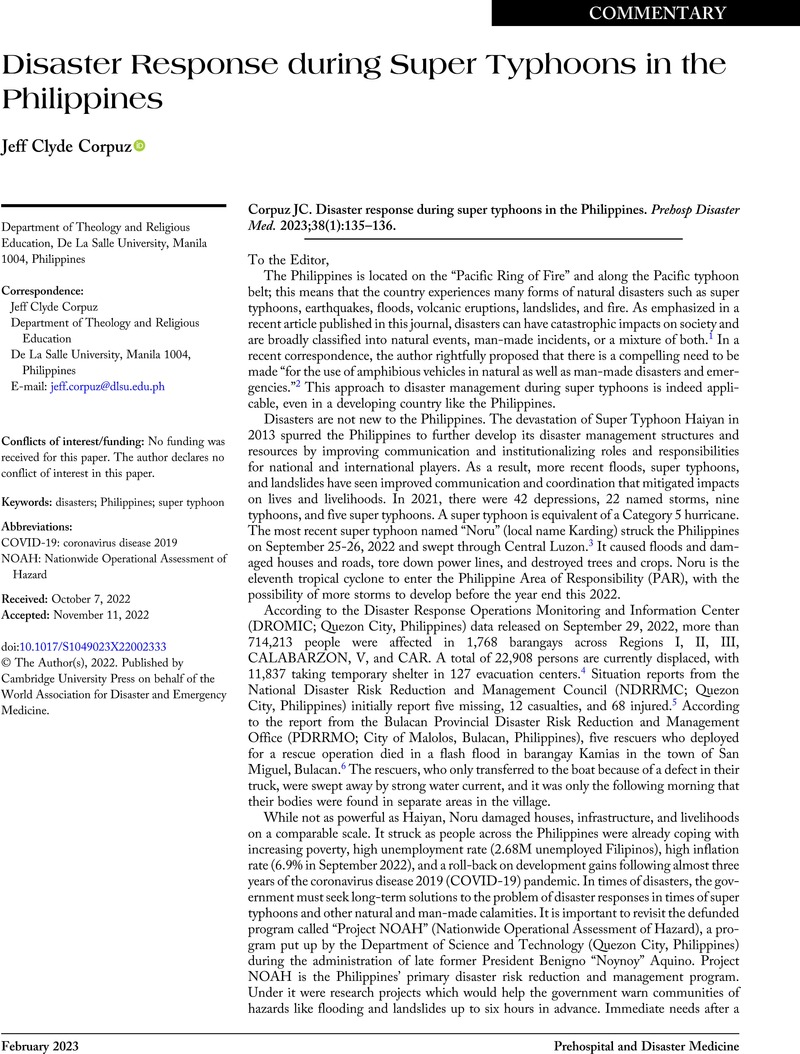Crossref Citations
This article has been cited by the following publications. This list is generated based on data provided by Crossref.
Corpuz, Jeff Clyde G.
2023.
The Importance of Prehospital and Disaster Medicine in Rural Areas in the Philippines.
Prehospital and Disaster Medicine,
Vol. 38,
Issue. 6,
p.
820.
Wang, Yifan
Josephs, Holly
Duan, Zhixiong
and
Gong, Jie
2024.
The impact of electrical hazards from overhead power lines on urban search and rescue operations during extreme flood events.
International Journal of Disaster Risk Reduction,
Vol. 104,
Issue. ,
p.
104359.
Corpuz, Jeff Clyde G.
and
Peñaflor, Aurora M.
2024.
Emergency Preparedness in Philippine Hospices: Insights From a Global Literature Review.
Journal of Palliative Care,
Vol. 39,
Issue. 4,
p.
264.
Corpuz, Jeff Clyde G
2025.
Wastewater Management in the Philippines: A Call for Localized Solutions and Policy Integration.
Environmental Health Insights,
Vol. 19,
Issue. ,




